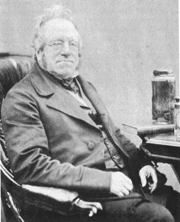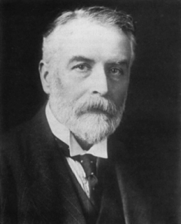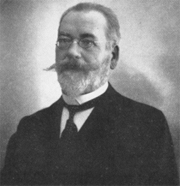The history of the Genus Phelsuma
It was the British herpetologist John Edward Gray (1800-1875) who classified the diurnal geckos of Western Indian Ocean into a new genus. He honoured the Dutch helminthologist Murk Van Phelsum with the name of the new genus, Phelsuma. The first written accounts however date from as early as 1708 by François Leguat, 1761 by Alexandre-Guy Pingré and 1795 by Philibert Marragon. Both publications are about Rodrigues Island (Mascarenes) and the species mentioned are most likely the now extinct Phelsuma gigas and Phelsuma edwardnewtoni.
It is very remarkable that also the first Linnaean described species, Phelsuma cepediana (Merrem, 1820) and Phelsuma ornata (Gray, 1825), both originate from a Mascarene island, Mauritius.
The Belgian zoologist George Albert Boulenger (1858-1937) classified the genus Phelsuma under the family Gekkonidae in his "Catalogue of the British Museum". Various museum species where described by him like Phelsuma edwardnewtoni and Phelsuma guentheri. At the same time the German herpetologist Oskar Boettger (1833-1910) was in the position to describe several species obtained from German expeditions to Madagascar and the Comoro Islands.
It is the Swedish scientist Hialmar Rendahl (1891-1969) in 1939 that recognizes several groups within the genus itself. He based himself mainly on the position of the nasal cavity. Rendahl pointed out that in all Mascarene species the nasal cavity is located right between the rostral and the first super labial, whereas in all other species the nasal cavity is located more towards the eye.
The first Monograph on the genus Phelsuma comes from the hand of Arthur Loveridge (1891-1980) in 1942. Those days only 23 species where known. Next to an identification key in this revision, the author also provided a useful table with morphological features.
Robert Mertens (1894-1975) was undoubted the authority on Phelsuma for almost 20 years. From 1954 until 1975, Robert Mertens described not less than 20 new species and subspecies, 13 of them still remain valid after numerous revisions. Next to that he published several articles on biogeography, ecology and ethology. In his revisions he followed Rendahl's (1939) theory and considered these three features as a recent evolvement within the genus;
• The green colouration instead grey or brown
• The position of the nasal cavity above the first lip scale
• The keeled ventral scales
Another 30 years past after Mertens' (1962-1966) big revision of the genus and various new species have been described. Some even that are hard to classify in the groups mentioned in Mertens' work like e.g. Phelsuma klemmeri (Seipp, 1991).
Jean Vinson (1906-1966) and his son Jean-Michel Vinson also consider all Mascarene species as a separate group within the genus and suspect that three different colonization waves from Madagascar lead to the current population on Mauritius, Réunion, Rodrigues and the other, smaller Mascarene Islands (1969 & 1975).
During the late 1970's and 1980's it was the German herpetologist Harald Meier (1922-2007), in the footsteps of Robert Mertens, that contributed to the knowledge of the genus with 12 new taxa, obtained during his many travels to the south western Indian Ocean.
The British herpetologist Anthony S. Cheke revised at the same time (1981-1982) the genus on the Seychelles islands and travelled to the many remote islands of the archipelago and to Agalega which led to the description of Phelsuma borbonica agalegae (1975). Also A. S. Gardner concentrated on the Seychelles Islands and published several papers on the systematics of the genus Phelsuma (1984-1986).
The German herpetologists Frank Glaw and Miguel Vences (1999) where the first to define nine Malagasy species groups based on phenetic characters; P. guttata-group, P. madagascariensis-group, P. lineata-group, P. mutabilis-group, P. laticauda-group, P. klemmeri-group, P. dubia-group, P. modesta-group and P. barbouri-group.
One of the first comprehensive molecular studies was done in 2004 by J.J. Austin, E.N. Arnold and C. G. Jones on several species, identifying several clades with close phylogenetic relationships.
Today, 64 taxa of the genus have been described, 45 species and 19 subspecies.





